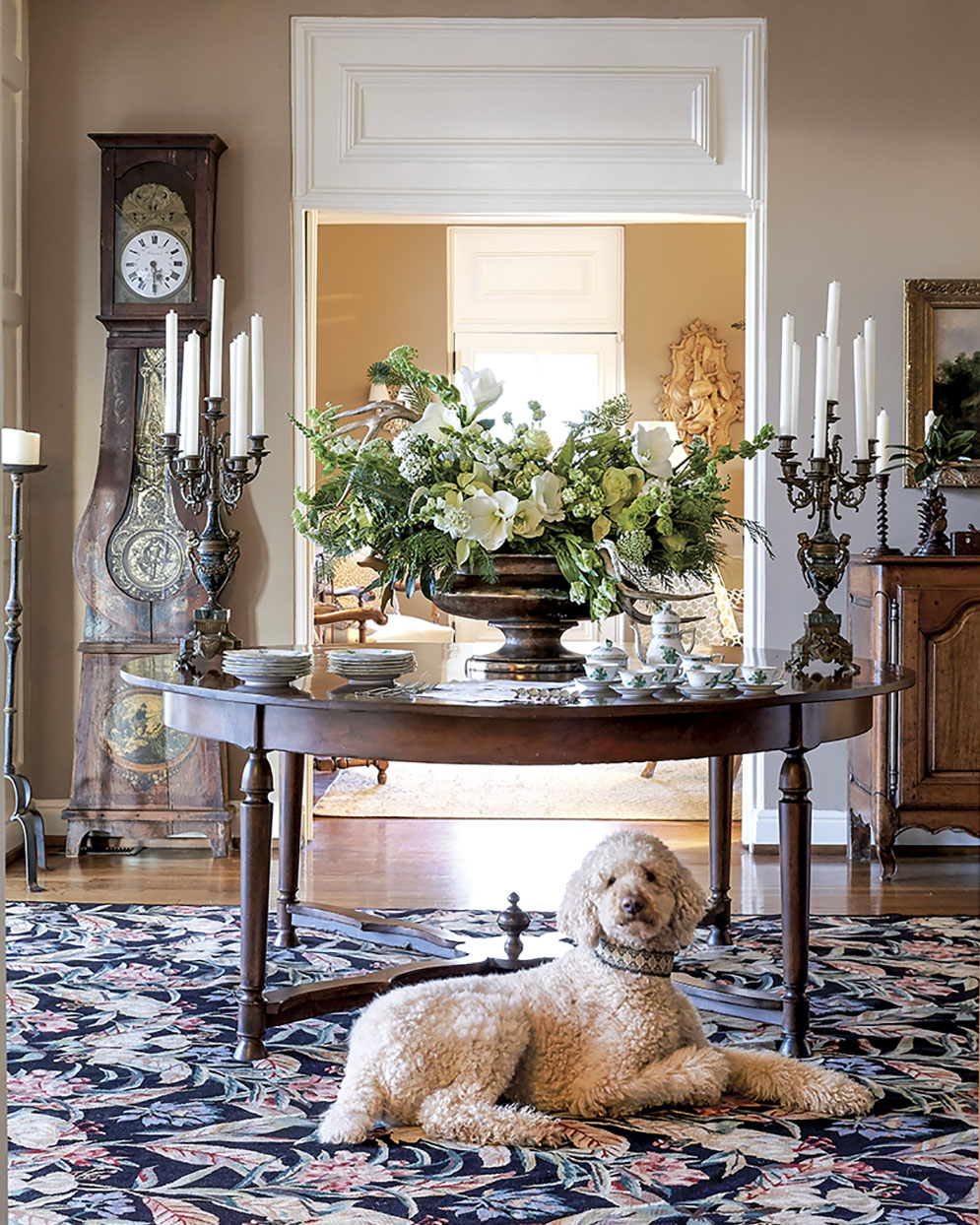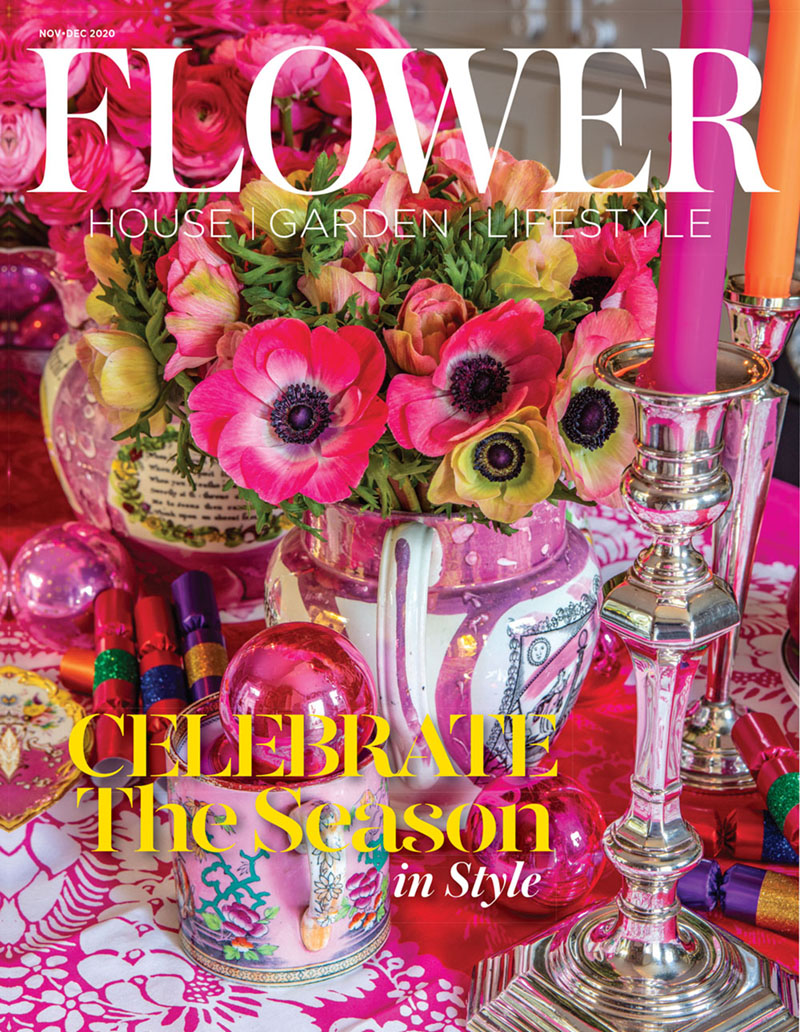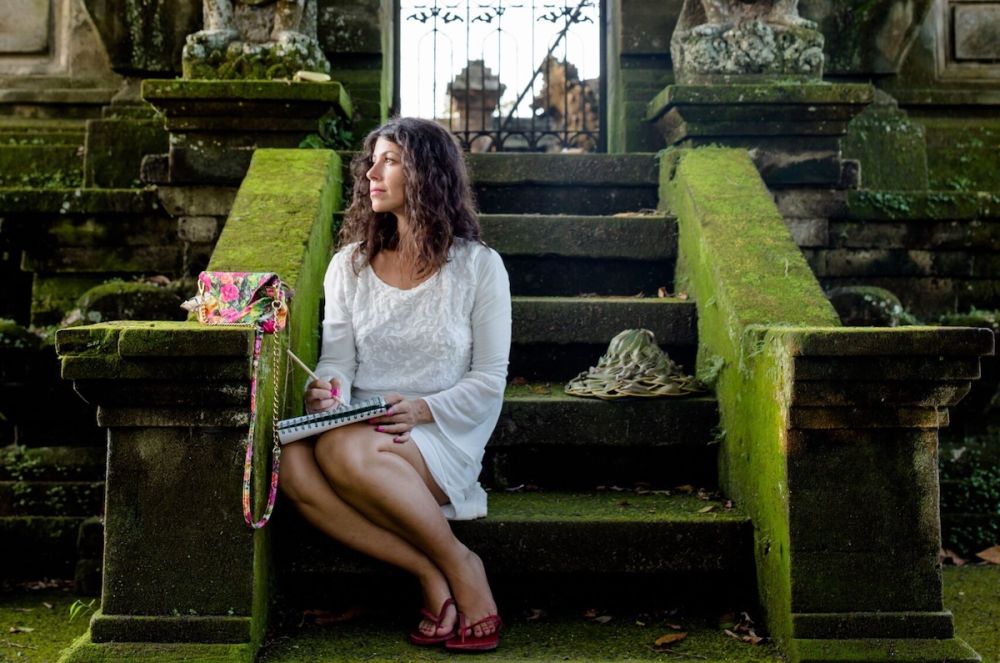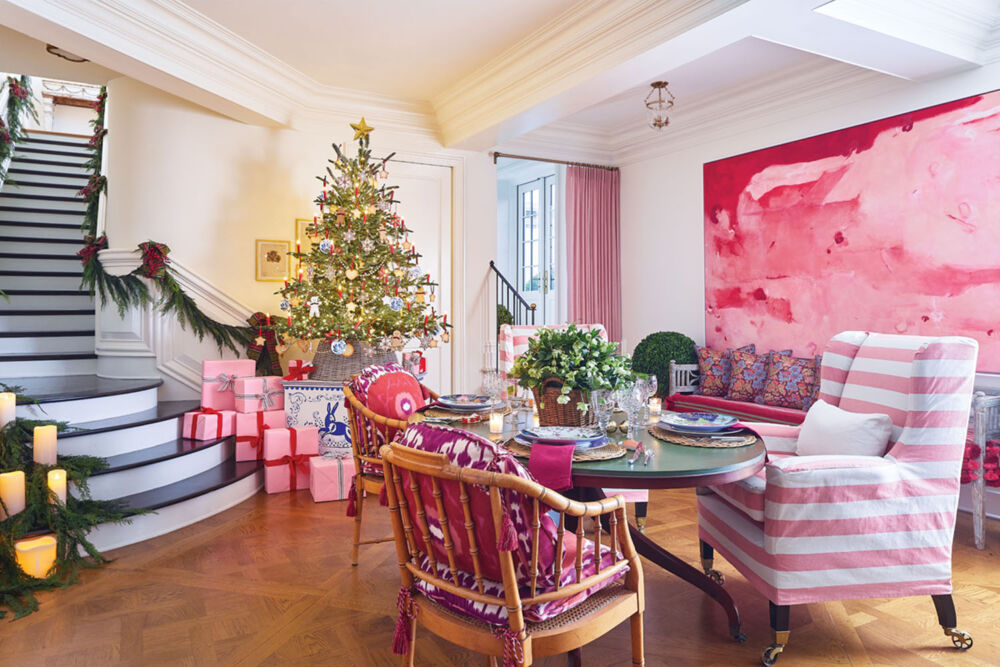
November December 2020 | Floral design by Kakhi Huffaker Wakefield of K Wakefield Designs | Produced by Alice Welsh Doyle | Photography by David Hillegas | Percy the poodle waits by the entry table to greet holiday visitors.
“I was inspired by Herend’s Chinese Bouquet china pattern that my grandmother, mother, sister, and I use year-round, but its green-and-white palette makes it a natural choice for Christmastime.” — Kakhi Huffaker Wakefield, K Wakefield Designs
Follow Kakhi’s step-by-step tutorial below to re-create this arrangement at home.

MATERIALS

-
- Gilded antlers
- ‘Green Trick’ dianthus
- Amaryllis
- Mix of greenery (curly pine, cypress, gold-tipped cedar, magnolia, aucuba, galax leaves)
- Poinsettia
- Ornamental kale
- Bells of Ireland
- Snapdragons
- Veronica
- Viburnum
- Spray roses
- ‘Green Lemonade’ roses
- Parrot tulips
- Double ranunculus
- Queen Anne’s lace
- Lisianthus
KAKHI’S FLORAL TUTORIAL

STEP 1
In a large antique brass or similar container, weave chicken wire in three layers into the opening. Take the ‘Green Tick’ dianthus and break it up to look like moss. Tape the antlers to wire metal skewers to secure them. Attach dianthus to the antler base using floral putty or glue dots to hide the tape. Add water to the container.

STEP 2
Trim the amaryllis stems, and make sure to put them directly into two layers of the chicken wire, as their stems are so thick they need the support and to go in before the other flowers. Place them at varying heights in the arrangement—some low and some floating above to create an inverted triangle.

STEP 3
Time to green up the arrangement! Use items from the yard, plant nursery, and seasonal Christmas greenery—magnolia, cypress, aucuba, curly pine, cedar, and galax leaves. Mix the colors and textures throughout the design.

STEP 4
Make it a white Christmas by adding cut poinsettias. You can treat them just like any other material you would use—we are just used to thinking of them in pots. Tuck a few in various places in the design.

STEP 5
For an unexpected surprise and more texture, use ornamental kale, trimming and pulling back the leaves some to give them a more open look. You only need a couple here and there.

STEP 6
Now for the line flowers. Use bells of Ireland, which impart a more vibrant shade of green, and snapdragons in a crisp white to help unite the palette. For a line lower in the arrangement, place textural veronica at an angle sloping downward.

STEP 7
Viburnum adds another lively dimension with its lacy texture and pretty green color. Trim and place throughout the design. Make sure some pieces sit higher in the arrangement.

STEP 8
Roses are always a good idea! Use spray roses in little bunches and green roses. To open the green roses up to look more like garden roses, twirl the stem, blow into the center, and gently flex the petals outward.

STEP 9
The texture of parrot tulips is so magical. Group them together in threes, and place them toward the bottom of the arrangement, so they hang over the edge of the container.

STEP 10
For the finishing touches, include flowers that are lighter and will dance in the arrangement. Trim and place double ranunculus, which have a wonderful ruffled quality; Queen Anne’s lace for an airy texture; and some green lisianthus. Trim and place at angles throughout the design.

This story originally appeared in Flower magazine’s Nov/Dec 2020 issue. Subscribe to the magazine or sign up for our free e-newsletter.




